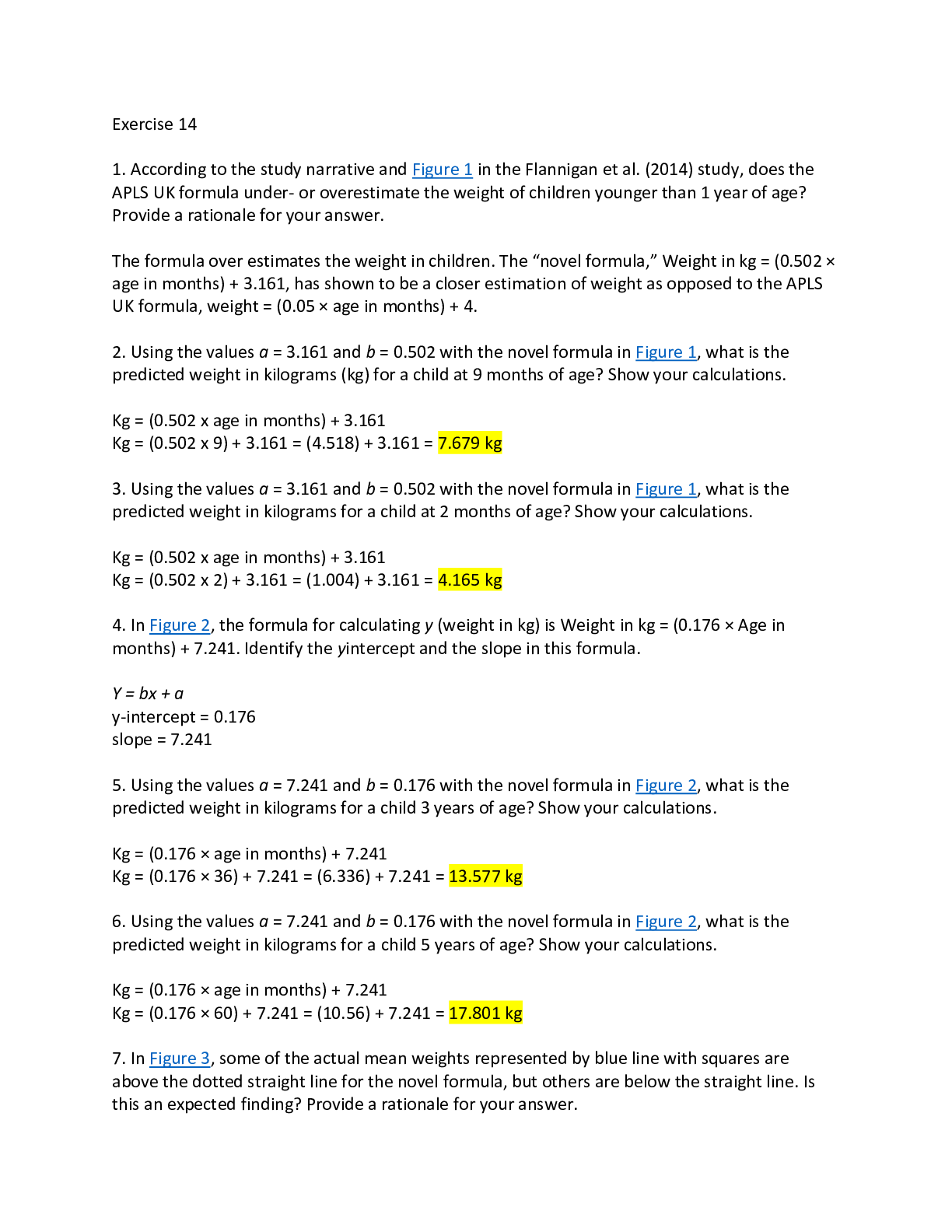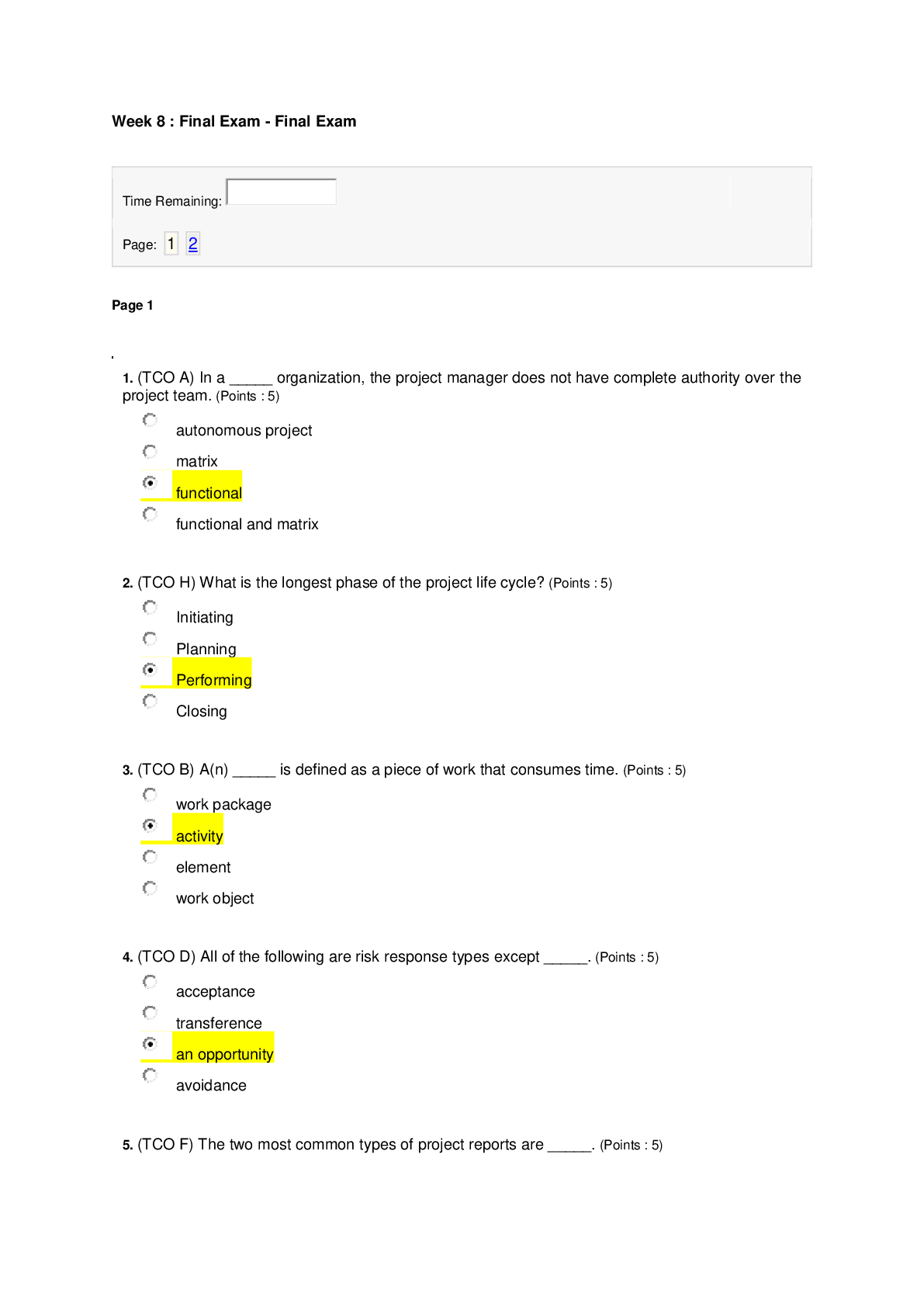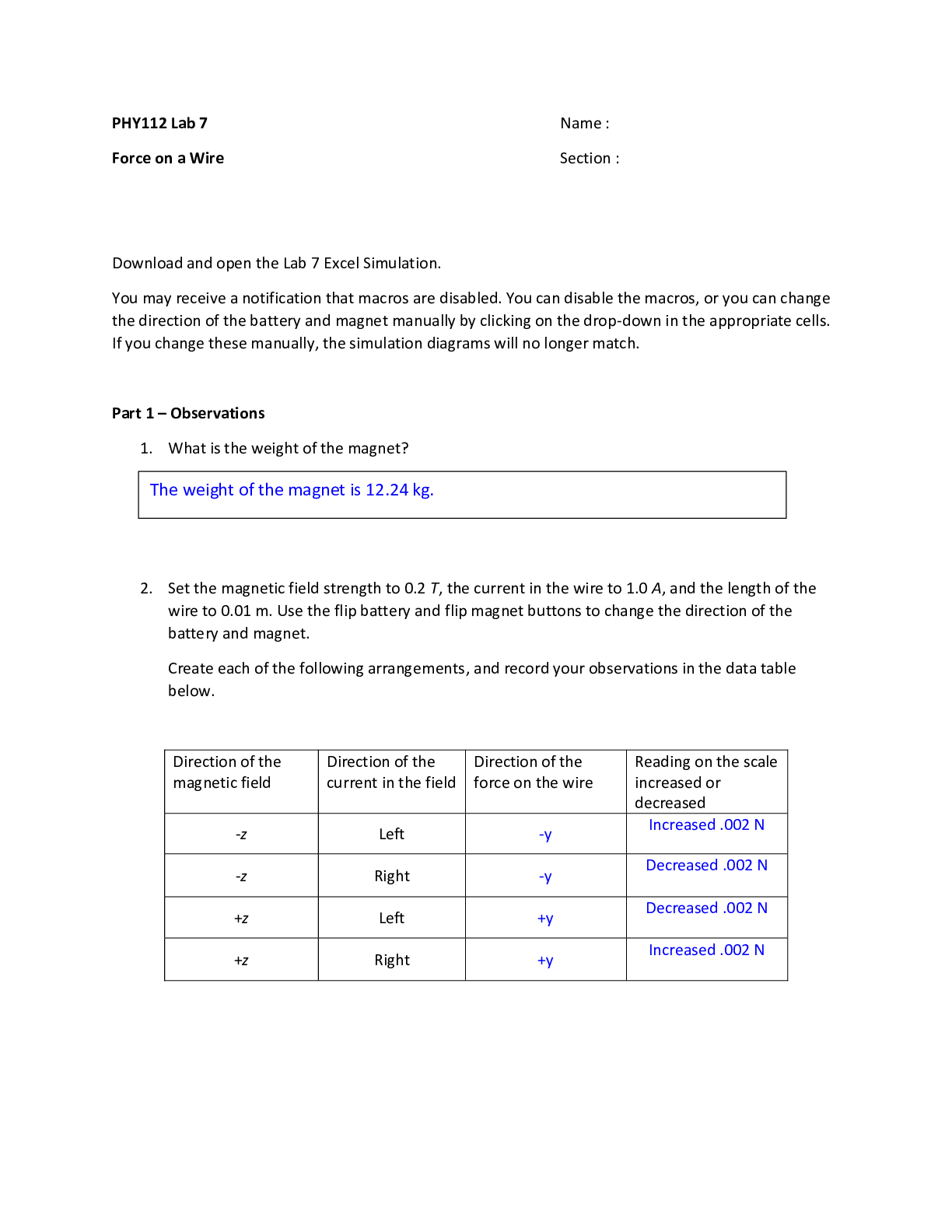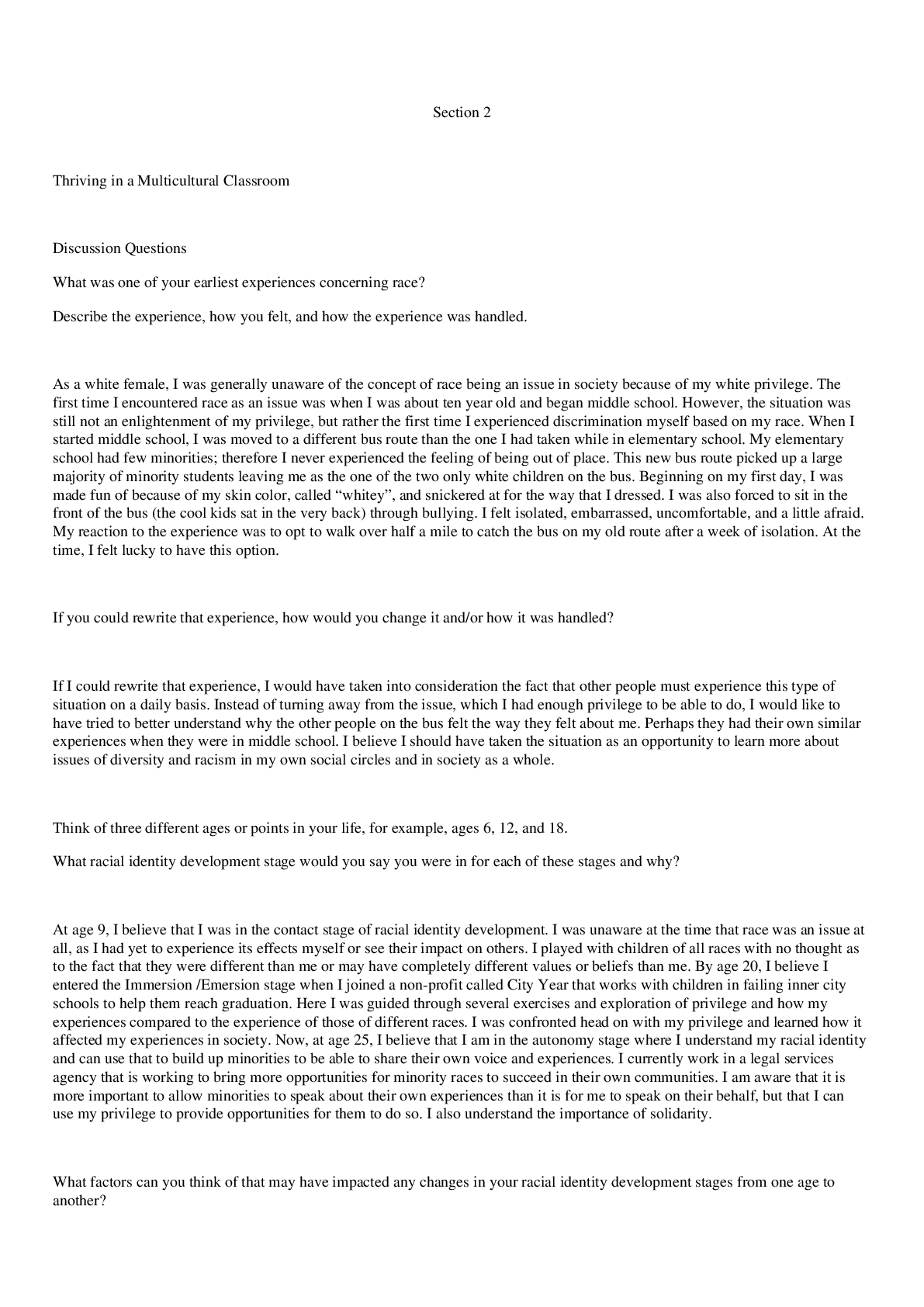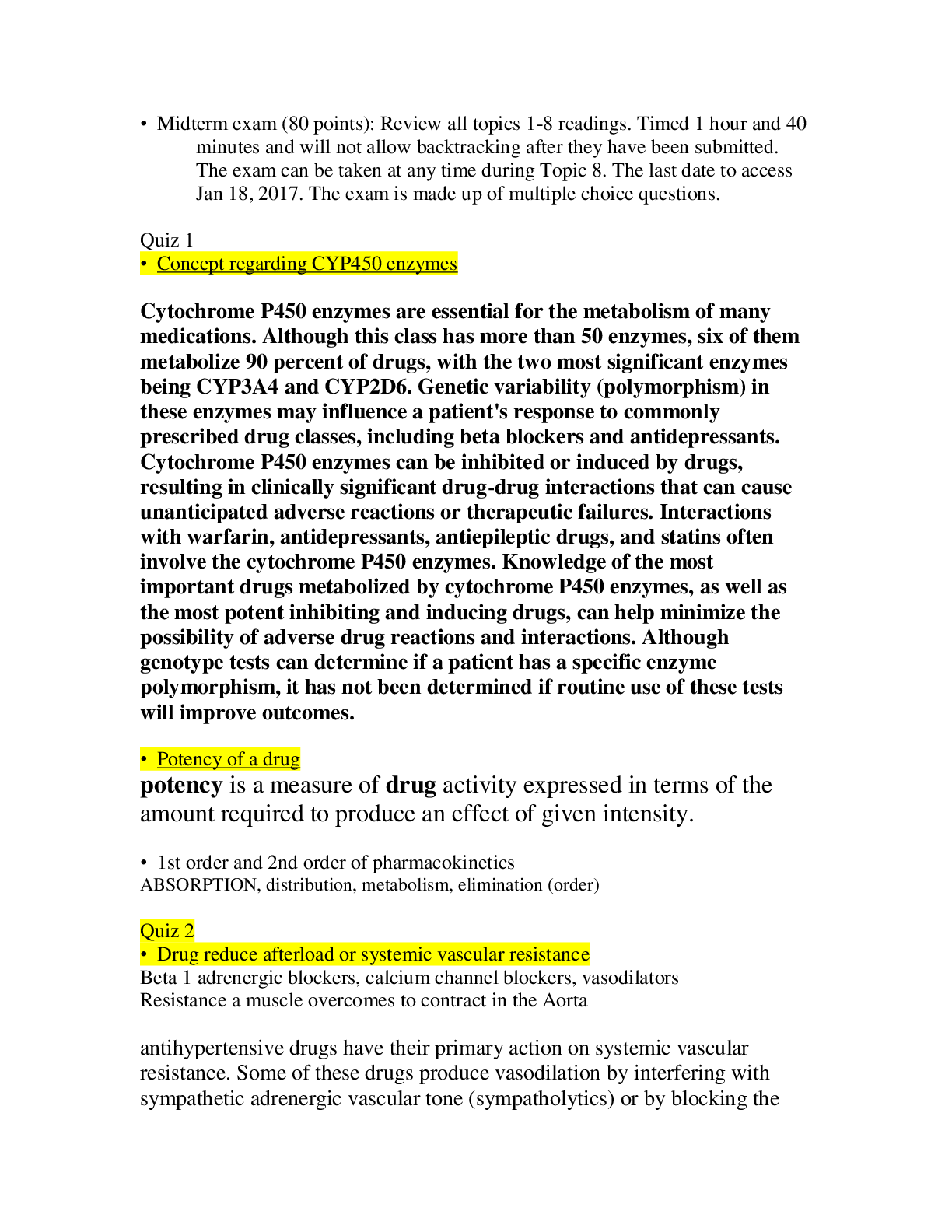Biology > STUDY GUIDE > biologyCopy_of_1_How_Science_and_Genetics_are_Reshaping_the_Race_Debate_of_the_21st_Century (All)
biologyCopy_of_1_How_Science_and_Genetics_are_Reshaping_the_Race_Debate_of_the_21st_Century
Document Content and Description Below
How Science and Genetics are Reshaping the Race Debate of the 21st Century by Vivian Chou, figures by Daniel Utter Excerpt Figure 1: ‘Race’ cannot be biologically defined due to genetic variat... ion among human individuals and populations. (A) The old concept of the “five races:” African, Asian, European, Native American, and Oceanian. According to this view, variation between the races is large, and thus, the each race is a separate category. Additionally, individual races are thought to have a relatively uniform genetic identity. (B) Actual genetic variation in humans. Human populations do roughly cluster into geographical regions. However, variation between different regions is small, thus blurring the lines between populations. Furthermore, variation within a single region is large, and there is no uniform identity. New findings in genetics tear down old ideas about race 1. Discussion with partner/group: What are the key differences This study source was downloaded by 100000793680026 from CourseHero.com on 05-15-2021 17:42:19 GMT -05:00 https://www.coursehero.com/file/68893167/Copy-of-1-How-Science-and-Genetics-are-Reshaping-the-Race-Debate-of-the-21st-Century/ This study resource was shared via CourseHero.combetween the “old concept of five races” A and the actual variation shown in B? It is shown that many individual beings that are classified to be in a certain group are heavily bounded by a thick circle in figure A. However, the reality is that due to genetic variation, the line of “5 races” are in fact a brief outline of someone’s biological ancestry. Additional thoughts from class discussion: A landmark 2002 study by Stanford scientists examined the question of human diversity by looking at the distribution across seven major geographical regions of 4,000 alleles. Alleles are the different “flavors” of a gene. For instance, all humans have the same genes that code for hair: the different alleles are why hair comes in all types of colors and textures. In the Stanford study, over 92% of alleles were found in two or more regions, and almost half of the alleles studied were present in all seven major geographical regions. The observation that the vast majority of the alleles were shared over multiple regions, or even throughout the entire world, points to the fundamental similarity of all people around the world—an idea that has been supported by many other studies (Figure 1B). If separate racial or ethnic groups actually existed, we would expect to find “trademark” alleles and other genetic features that are characteristic of a single group but not present in any others. However, the 2002 Stanford study found that only 7.4% of over 4000 alleles were specific to one geographical region. Furthermore, even when region-specific alleles did appear, they only occurred in about 1% of the people from that region—hardly enough to be any kind of trademark. Thus, there is no evidence that the groups we commonly call “races” have distinct, unifying genetic identities. In fact, there is ample variation within races (Figure 1B). 1. Discussion with partner/group: Answer questions (Handout) Ultimately, there is so much ambiguity between the races, and so much variation within them, that two people of European descent may be more genetically similar to an Asian person than they are to each other (Figure 2). Figure 2: Case study of genetic variation between three scientists. Left: Schematization of the genetic variation between Drs. James Watson, Craig Venter, and Kim Seong-jin. This study source was downloaded by 100000793680026 from CourseHero.com on 05-15-2021 17:42:19 GMT -05:00 https://www.coursehero.com/file/68893167/Copy-of-1-How-Science-and-Genetics-are-Reshaping-the-Race-Debate-of-the-21st-Century/ This study resource was shared via C [Show More]
Last updated: 2 years ago
Preview 1 out of 7 pages

Buy this document to get the full access instantly
Instant Download Access after purchase
Buy NowInstant download
We Accept:

Reviews( 0 )
$7.00
Can't find what you want? Try our AI powered Search
Document information
Connected school, study & course
About the document
Uploaded On
May 16, 2021
Number of pages
7
Written in
Additional information
This document has been written for:
Uploaded
May 16, 2021
Downloads
0
Views
69


.png)
.png)









